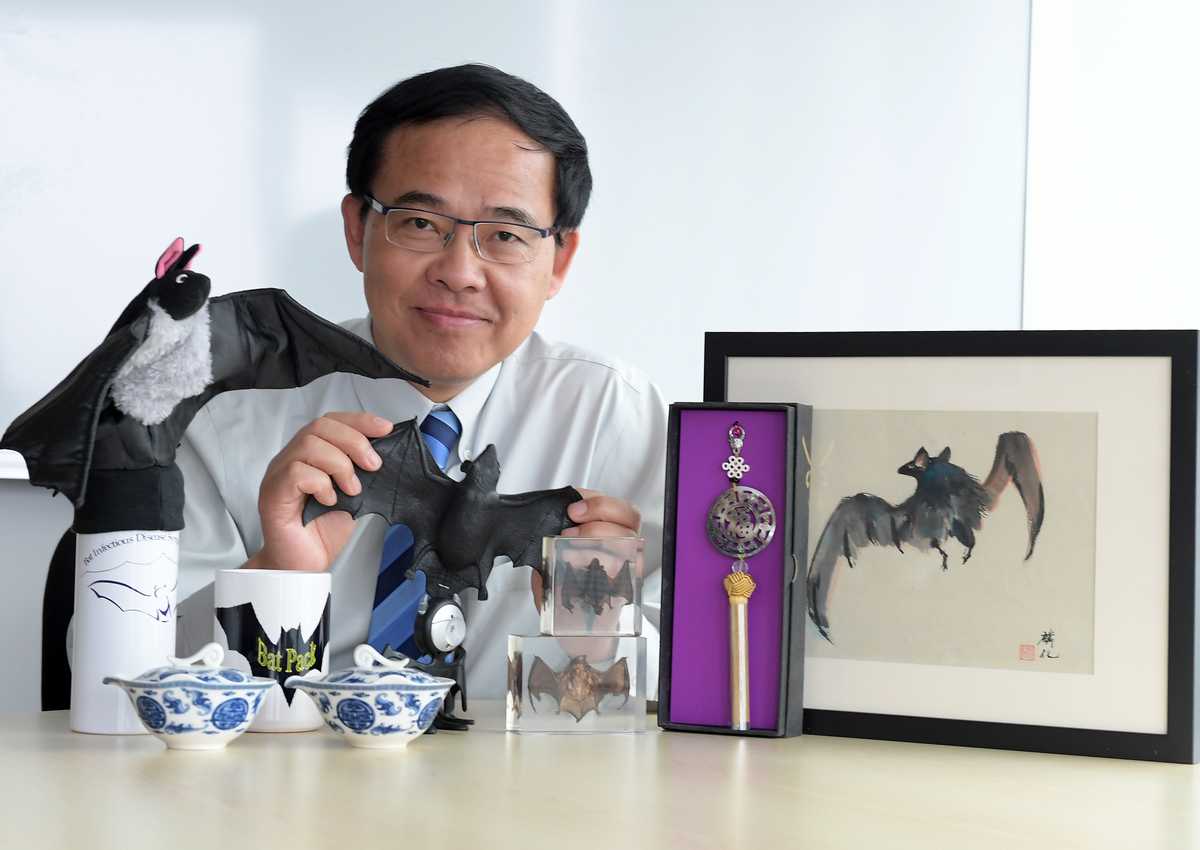Study by biochemist may lead to novel drugs for fighting cancer, infectious disease
Bats are often viewed with distaste, except in Chinese culture, where the characters for bat, bian fu, evoke the term for prosperity, fu. So for the Chinese, bats are a symbol of good fortune and longevity.
Professor Wang Linfa, 56, from the Duke-NUS Medical School, believes there might be truth in this.
Although they are natural hosts of viruses such as Nipah, Hendra and Sars, bats themselves are largely immune to the deadly diseases.
They also have an average lifespan of 20 to 30 years – generally 10 to 20 times longer than that of their land-bound rodent cousins. Also, studies have shown that bats do not get cancer easily.
These are some reasons Prof Wang, who is director of the emerging infectious diseases programme at Duke-NUS, believes the study of bats could unlock novel cures for diseases in humans.
For more than 20 years, the Shanghai-born biochemist researched bat-borne viruses. Then in 2006, he decided there was a need to learn more about the bats themselves.
“I used to be nicknamed the Bat Virus Man. But now, it is probably more accurate to call me the Bat Man,” he told The Straits Times with a chuckle.
He now hopes to breed a colony of bats in Singapore to learn more about them, as part of a study funded by the National Research Foundation (NRF).
He could not be drawn into giving more details about the project, but said: “Humans always dreamt of living long lives and, in a way, bats are a great model system to achieving that goal. After all, living long lives, being cancer-free and not getting deadly infectious diseases seem to be all linked.”
An NRF spokesman said the research is supported under the foundation’s Competitive Research Programme Funding Scheme, which funds use-inspired basic research up to a period of five years.
She noted: “Prof Wang’s research was deemed by an international review panel to be cutting-edge, with potential relevance to Singapore.
“It could uncover strategies and mechanisms for novel drugs in cancer and infectious disease. It could also develop immunological research tools that could be commercialised.”
So even as vampire bats rise among the ghouls that populate Halloween this weekend, remember, they might be more friend than foe.
audreyt@sph.com.sg
Some bats found in Singapore
There are more than 1,000 species of bats in the world, 25 of which can be found in Singapore. Those here can be divided mainly into two groups: insect eaters, and species that prefer fruit or nectar.
Here are some examples of bats found in Singapore.
SHORT-NOSED FRUIT BAT
Most common of all fruit/nectar-eating bats here. It can be found in habitats ranging from orchards and gardens to forested tracts.
CAVE NECTAR BAT
Not as common as the short- nosed fruit bat and can also be found across South-east Asia. In countries where it roosts in natural caves, uncontrolled tourism and mining are major threats.
BAMBOO BAT
Possibly the smallest bat in Singapore, this insect-eater can be found in secondary forests, parks and gardens. They are small enough to roost in the cavities of bamboo plants.

This article was first published on Oct 29, 2016.
Get a copy of The Straits Times or go to straitstimes.com for more stories.






